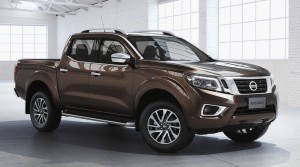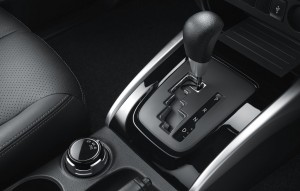In many markets including Malaysia, the fourth-generation Triton pick-up has stood as Mitsubishi’s core model in the last 10 years, a shining star over a disappointing and barren period for the three diamond emblem. When the last generation Triton (or L200 in other parts of the world) broke cover in 2005, it redefined expectations – there was never a pick-up truck that looked this stylish, with a cabin so habitable.
The Triton’s trump card was that it straddled the divide between that of a truck and a passenger car, winning over many new customers who wouldn’t have considered a pick-up in the first place. In double-cab form, the Triton’s cabin length was the longest in its class (still is), and that gave it good legroom and properly sized rear doors. Many years later, its competitors would adopt the formula.
Is the new one any good?
Car brands have become predictable. When there’s potential market share to be gained following a slow-selling model, they’ll swallow a brave pill and roll the dice. When it comes to succeeding a popular model, conservatism sets in. And while no one expects Mitsubishi to reinvent the pick-up truck (again), they have clearly taken a safe path with the fifth-generation Triton. Against a backdrop of talented competitors (current and forthcoming), one has to ask whether Mitsubishi has done enough.
In terms of dimensions and hardware, much of it is carried over, including the powertrain, 4WD system (mechanical type) and suspension, though many of the components have been tweaked and fettled with to bring them up to date. For instance the chassis frame has been reinforced, the 2.5L VGT diesel turbo engine re-tuned to serve up more torque (for a tidy sum of 400Nm, along with 178ps), the body has lower aerodynamic drag so that it runs quieter and more efficiently than before.
The distinctive J-Line styling cue (where the cab meets the bed) is retained and there’s now a strong crease line running from the headlamps through to the tail-lamps to achieve a degree of visual connection between the front half of the truck and the bed (basically a rectangular tub). While you can’t really call any truck sleek, the new Triton does look sleeker than others.
It is at the front where opinions are divided, with comments ranging from “OTT” for the very shiny and overly complex-looking chrome grille (eh, what happened to beautiful GR concept?), to “very cool” for the LED day-time running lights and Xenon projectors. Maybe it’s to appease the taste of customers who live north of our border (they do like their chrome), but it’s certainly more a miss than a hit here.
The big makeover is saved for the cabin. It’s apparent that the plastics and materials used are of a higher quality (about time, Mitsubishi) with piano-black surfaces and contrasting silver trim sprinkled on the dash to good effect. I’d hasten a guess that the person responsible for the front grille didn’t do the interior because the layout is easy on the eyes and pleasant to use.
For all intents and purposes, it’s a bona fide passenger car interior in terms of features and comfort, even the seats are comfortable and supportive. Opt for the top-of-the-range Adventure variant (the focus of our attention and the expected best-selling grade) and you’ll get premium amenities such as leather seating, dual-zone auto A/C, proximity key with push start button, touch-screen audio with reverse camera, steering column mounted shift paddles and a classy 4WD rotary selector that looks like something from a Range Rover.
But is it enough?

At this point in time, and based on the healthy bookings reported by Mitsubishi Motors Malaysia, the new Triton probably has enough to claw back some lost ground to the hot-selling Ford Ranger (due for a facelift later this year) and to keep the Isuzu D-Max at bay, both of which have a more robust, off-road image relative to the more refined appearance of the new Triton.

However, the path to success will no doubt get trickier later in the year when the new Nissan Navara arrives with a 7-speed automatic and coil spring/torsion beam rear suspension, followed thereafter in the first half of 2016 by the replacement of the undisputed king of pick-up in sales (see chart below) – the Toyota Hilux, with all-new powertrains and interesting new tech. Both the upper grades of the new Navara and Hilux are also expected to have electronically controlled 4WD systems, along with hill descent control and vehicle stability assist currently not offered on the Mitsubishi.
Suffice to say, the new Triton will make hay while the sun shines, but Mitsubishi better have some ammo in its pockets because the enemy is already on its way, and they are armed to the teeth.
The new Triton is available in five dual-cab variants. Prices start from RM69,800 for the Triton Quest 4×2 M/T to RM111,600 for the Triton Adventure A/T, inclusive of GST and insurance.



